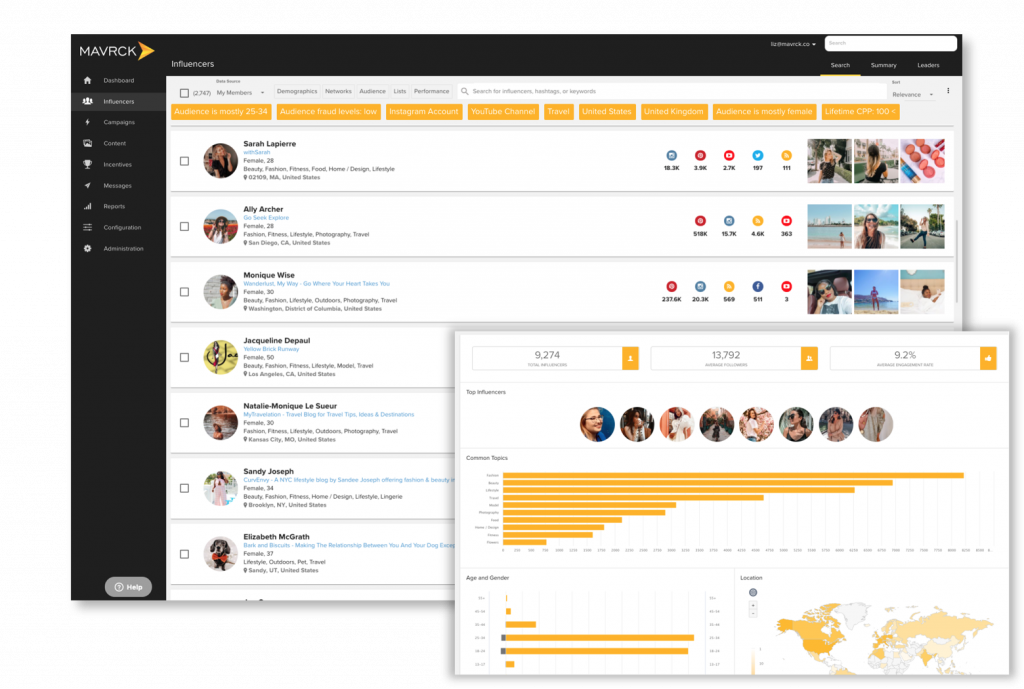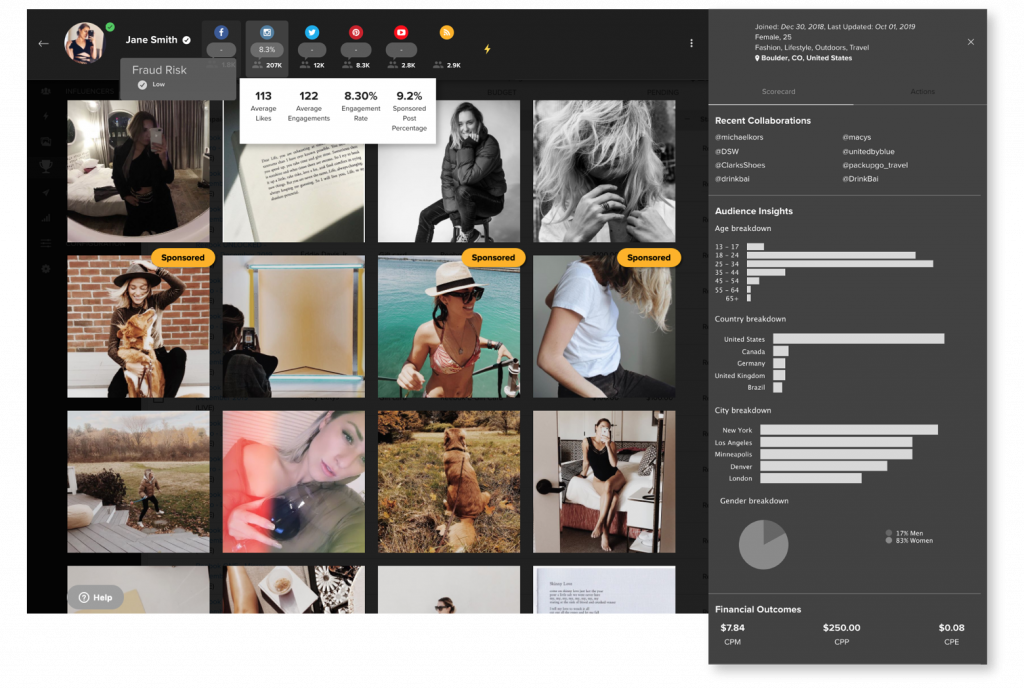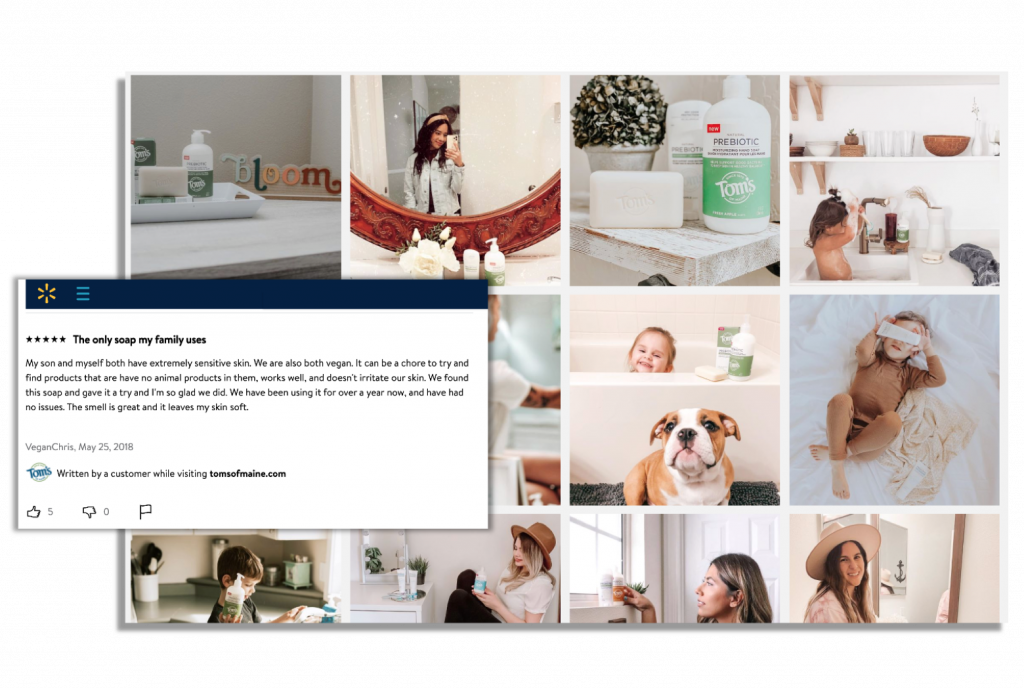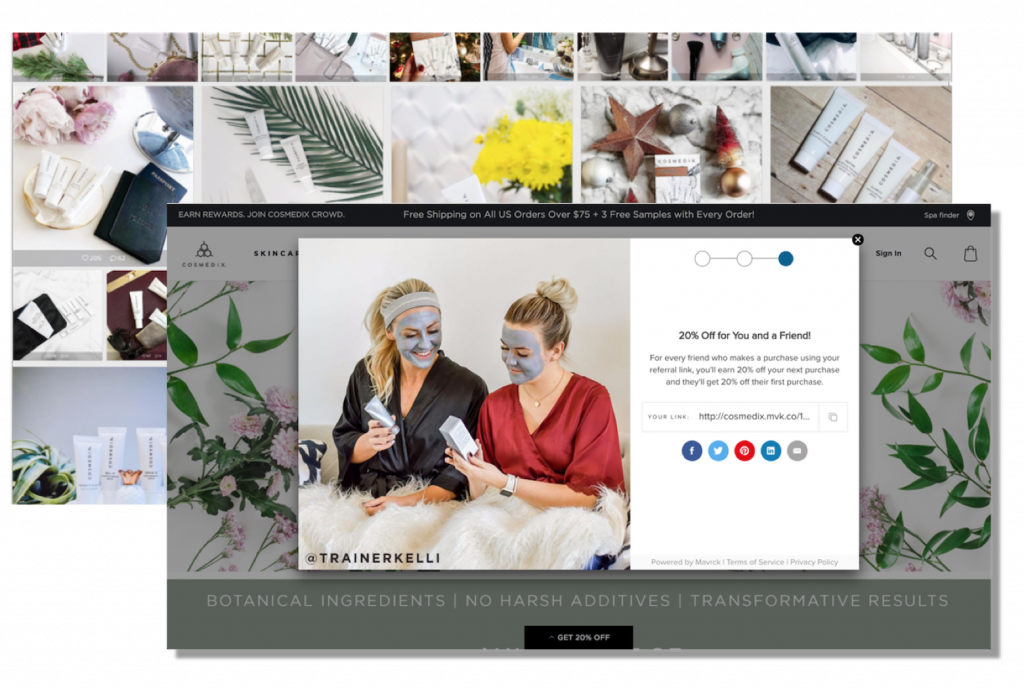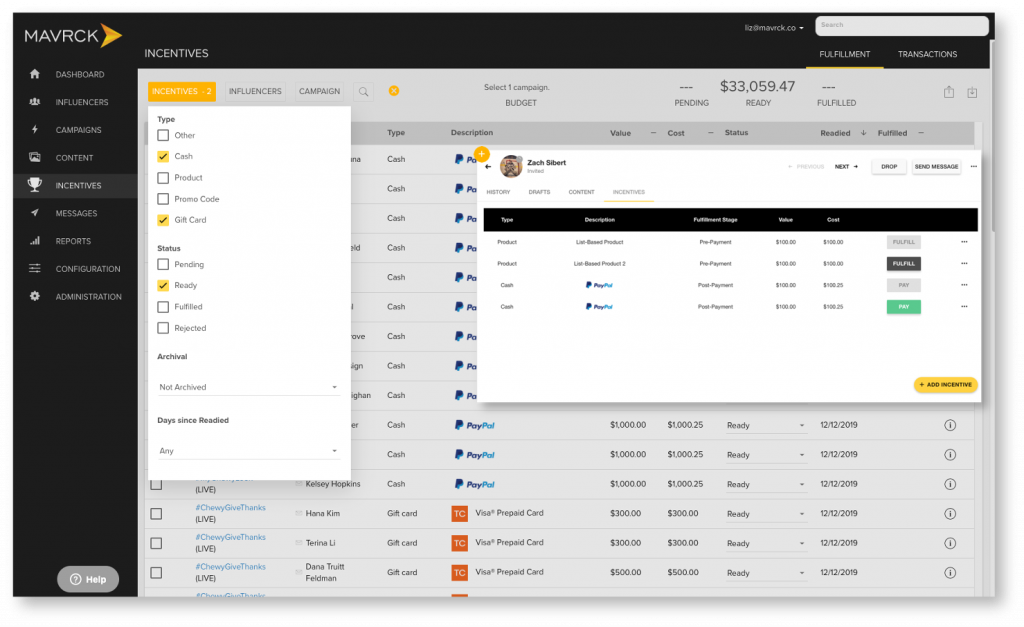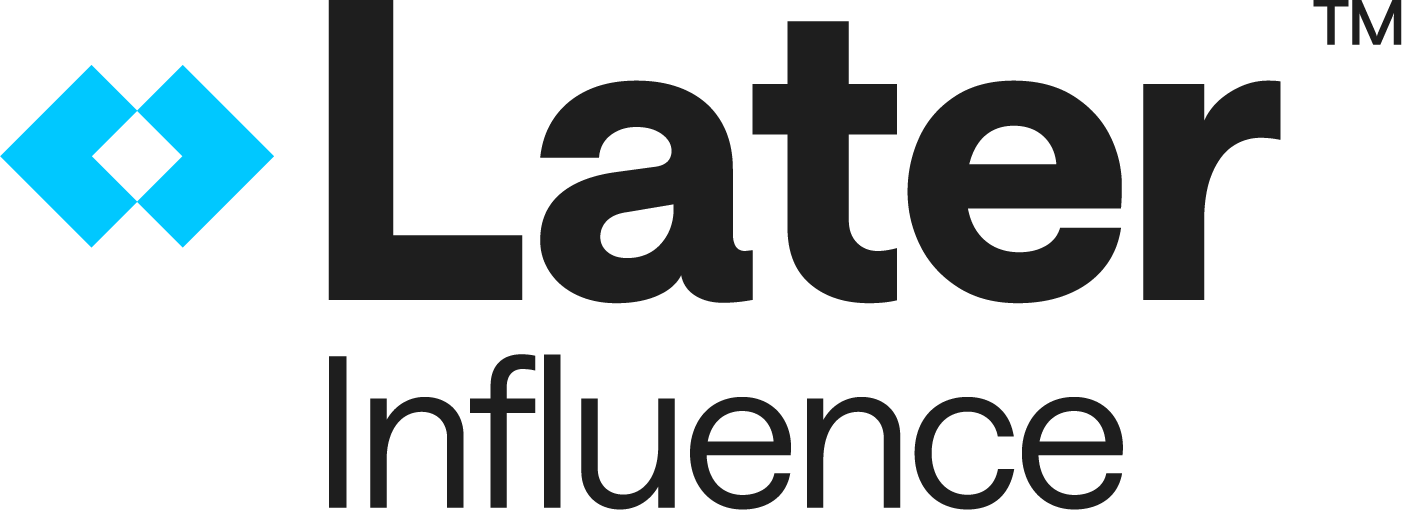
On January 17th, 2024, Mavrck underwent a rebranding and is now known as Later Influence, featuring a new logo and branding that aligns with our vision for the future.
In the very first post on this website, we made a big point about defining what influencers are—or, rather, who they are. Unlike celebrities, we said, “influencers can be anywhere. They can be anyone.” If anyone working for Later Influence read that post when it was first published, I imagine they were thinking something along the lines of, “Well, duh.”
Like a lot of influencer marketing software platforms, Later Influence began life as something very different. In 2012, the company launched as Splashscore, a managed influencer community platform, but pivoted in 2014 to become Later Influence after releasing a self-service and whitelabeled platform for brands to manage their own influencer communities.
The end result is something that’s still deep in the influencer marketing game, but is playing by wildly different—and innovative—rules. The whole notion of spending time, searching through influencer search engines and filtering down to find people who fit into your vertical, match your style, have the right number of followers and engagement stats—that has its place for long-tail campaigns where the aim is a bigger, more loyal audience. Eventually, though, the point of building that audience is to turn them into customers. The idea behind Later Influence cleverly flips that normal process on its head, asking the question:
This question itself is already a unique—but common sense—approach to influencer marketing. When brands search for influencers, they typically like to start with someone who has already demonstrated an affinity for their company or products, and has a large following. Absent any brand affinity, they’ll settle for the big numbers. But then it can become a long courtship to activate that influencer—you’re essentially marketing to that one person in the hopes of future access to her audience. And you’ll do that despite all the evidence that the more followers an influencer has, the less engaged her audience will be.
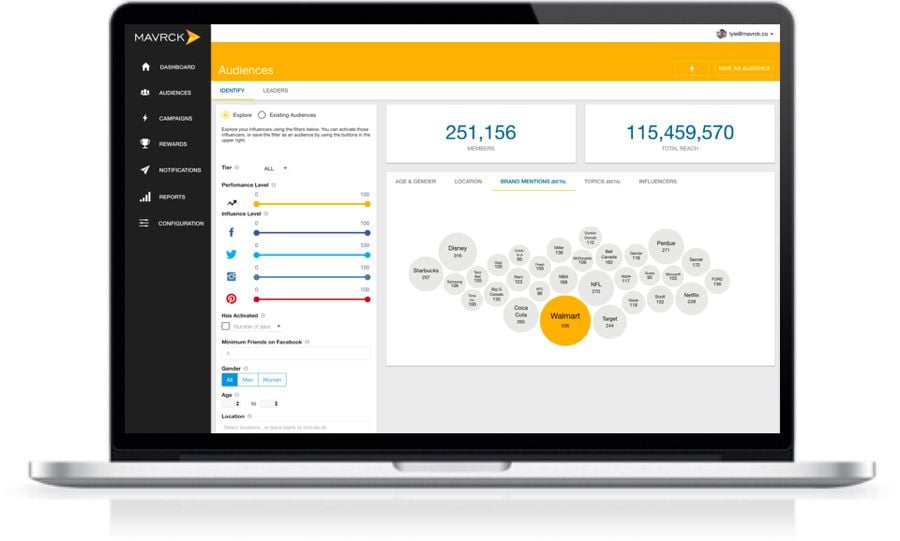
Later Influence skips all that by finding influencers—micro-influencers specifically—from people who are already your customers. It’s part of a thoroughly programmatic approach to all aspects of influencer marketing.
Pricing
Access to the Later Influence platform is sold on a subscription basis and the pricing is customized based on customer needs. If you’re wondering if it’s in your budget, here are two relevant facts that should help you figure that out:
- Later Influence current roster of clients features many big names: Gillette, Dunkin’ Donuts, Universal Studios, New Balance, Proctor & Gamble, Sears, and JetBlue. The list goes on, and you’ve heard of every company on that list.
- One of Later Influence unique features is the way influencer activation can happen at checkout time—when a customer logs in and purchases something through the web or mobile. Because the point of the platform is to market at scale, this implies your e-commerce channels are already processing hundreds, if not thousands, of transactions per day. Later Influence own case study stats refer to results in terms of “per 1,000 influencers.” Read another way, that’s “per 1,000 customers.”
The Details
As mentioned in the Overview, Later Influence has a programmatic approach to influencer marketing. From a high level, this means that the variety of campaign types offered on the platform can all be set up easily in a kind of fill-in-the-blanks fashion. The campaign is already programmed, you just need to tell the platform all the specifics, not unlike a standard influencer marketplace. The difference here is that Later Influence offers many more programs—beyond the creation and amplification of content—than other marketplace platforms. And many of these can be almost entirely automated, making the phrase “marketing at scale” truer than ever before.
Before any of the identification and activation can happen, you’ve got to set up and define all the kinds of campaigns you want to run. This all happens in the backend, where you can use one of Later Influence 20 predefined “digital activities” for your influencers to participate in. This could be something like sharing a coupon with friends, or even the creation of their own content featuring your brand. Your customers, of course, earn rewards for sharing these things out. You can segment your influencers based on a wide variety of criteria, from demo- to psychographic information—and you can assign digital activities to them based on the segments they land in. You’ll have set this all up in advance, before you get to the point of influencer activation.
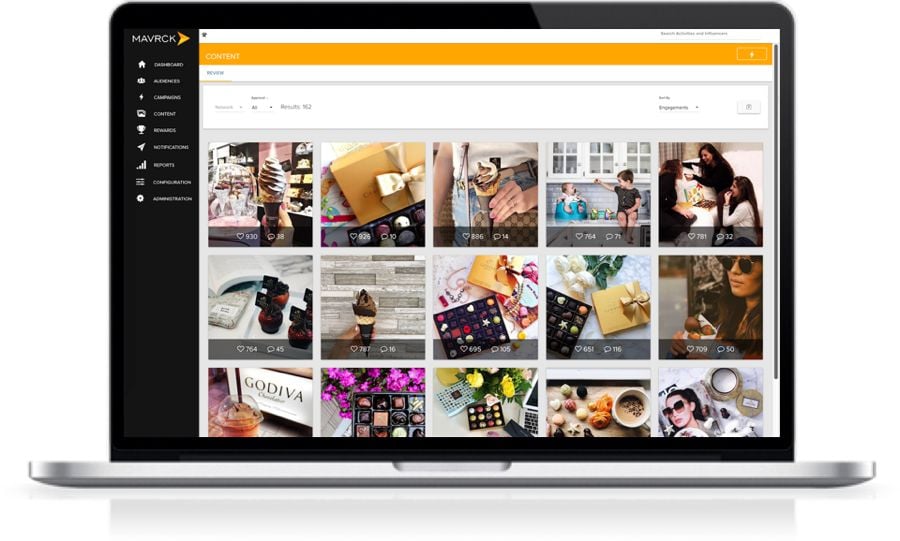
Later Influence works by connecting with your existing digital presence, so when you create campaign briefs and solicit participants, everything can be published to a white-labeled standalone microsite, or as a plugin with your existing website, mobile app, and even email newsletter. The process for influencer identification is accomplished in one of two ways. There’s a traditional discovery tool within the platform, in which you can search through the database of 2.5 million influencers. You can also recruit your existing customers in a few ways, like having them log in to your e-commerce site using their Facebook profile or setting up a portal to have them sign on as “ambassadors.”
Influencers from either of these pools need to sign up for your brand’s Later Influence platform using their social media accounts. Because of this, every person you work with is granting the platform access to their data, and Later Influence ingests it all via API. The number of followers, posts, engagement (likes and comments), brand affinities, favorite movies, hometown—all of that gets indexed and parsed by the Later Influence algorithm. At this stage, what’s most important is the customer’s influence, measured by all the standard metrics for reach and engagement. At this point a determination is made about how influential this customer might be, and is automatically activated into a campaign that she’s qualified for.
Later Influence supports the full spectrum of different influencer personas, including micro, macro and mega influencers. All that content the influencers create on your behalf is designed to get people back to your site to register or buy something. At that point, they can sign on, too, and you’ve now got direct marketing access to them—not just email but all of the data they’ve supplied to their social network.
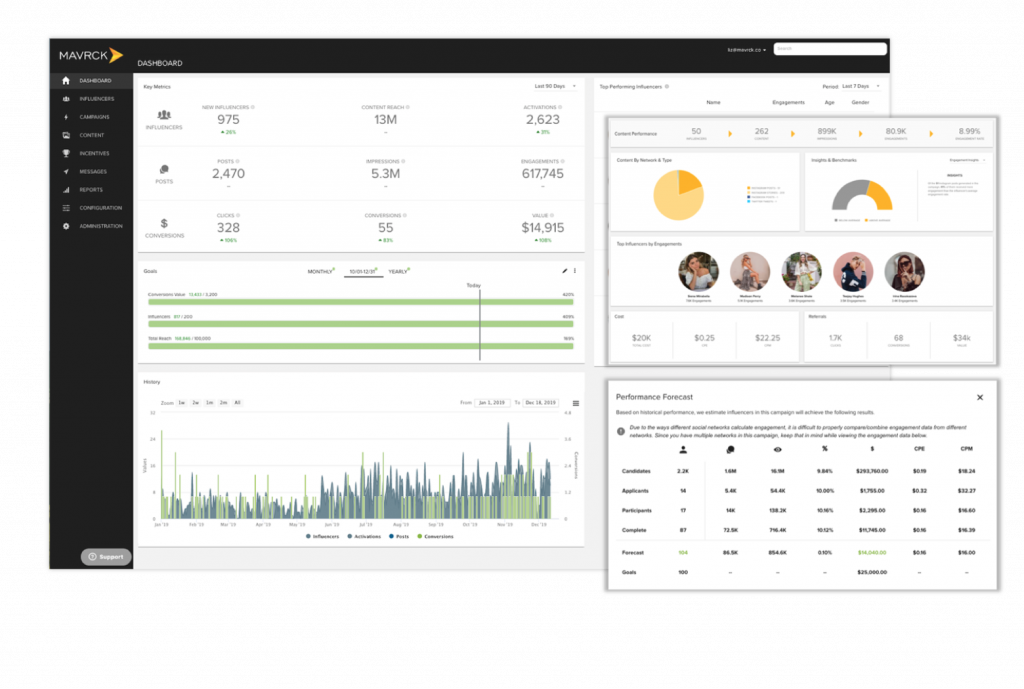 Depending on the type of campaign you’ve run, you may be able to just sit back and wait for results to start flowing in. If the campaign is a referral program, for example, Later Influence handles rewarding the referrers. For a program that’s a survey—something that reimagines influencers not just as marketing partners but as consumer advisors—you just create the questions and Later Influence presents the results in an easily digestible report, something you’re able to refer back to as needed. For traditional influencer campaigns, the platform offers a familiar workflow manager, though it is far and away superior to most of what you’d find on competing marketplace platforms. When working within campaigns, Later Influence feels more like a fully-featured CRM than an influencer marketing platform. This makes all the sense in the world, though, given Later Influence customer-centric approach to influencer marketing.
Depending on the type of campaign you’ve run, you may be able to just sit back and wait for results to start flowing in. If the campaign is a referral program, for example, Later Influence handles rewarding the referrers. For a program that’s a survey—something that reimagines influencers not just as marketing partners but as consumer advisors—you just create the questions and Later Influence presents the results in an easily digestible report, something you’re able to refer back to as needed. For traditional influencer campaigns, the platform offers a familiar workflow manager, though it is far and away superior to most of what you’d find on competing marketplace platforms. When working within campaigns, Later Influence feels more like a fully-featured CRM than an influencer marketing platform. This makes all the sense in the world, though, given Later Influence customer-centric approach to influencer marketing.
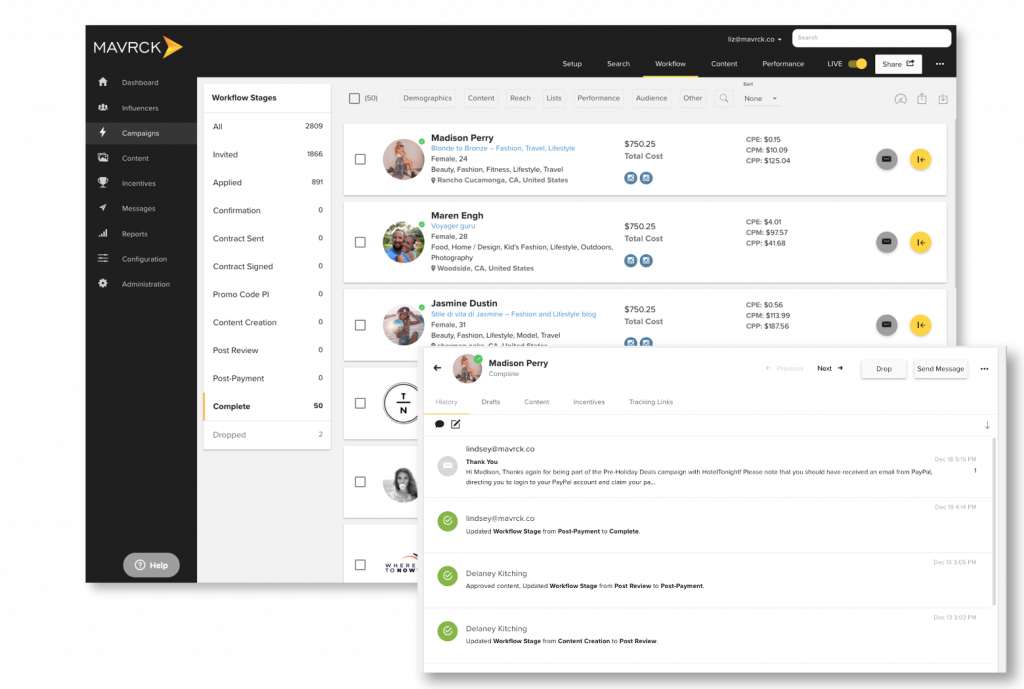
The same can be said for the features built around Influencer Relationship Management (which makes even more sense, given that phrase’s acronym is one letter off from CRM). Apart from the incredible level of detail can see for each influencer (thanks to the user-authorised, API-accessed data), you can group influencers together in whatever configuration you like, however you’d like to categorise them. Because these influencers are also your customers, the reporting is doing double duty for you. You’re not just seeing how effective your ambassadors are at representing you online, you’re also getting a direct look into your customer demographics. With most influencer platforms, you know a lot about your creators and a lot less about your audience. With Later Influence, your customers are happily telling you everything you want to know about them. Understanding how to best market to them means they’ll be more enthused about marketing on your behalf. And much of this happens continuously and without the need of intervention, collecting new customers and influencers alike all the while.
Conclusion
Since viewing the demo of Later Influence, I found myself describing it to others on the IMH team as “influencer marketing, where your influencers don’t know they’re your influencers.” While that’s true, it also sounds maybe a little evil—which really isn’t the case. To the customers activated as influencers through the platform, the whole experience feels like an advanced loyalty program. They get special offers, rewards on purchases, incentives for sharing content, coupons. And even if they don’t know they’re part of some specific marketing campaign, they certainly understand that the brand or product benefits when they share content around it—and it all sounds like a fair deal.
So, to revise my earlier description: if an influencer marketing platform could have a baby with a loyalty/rewards platform, that baby would be Later Influence. That baby would be clever as hell, too.
Later Influence
-
Features
-
Ease of Use
-
Reporting


